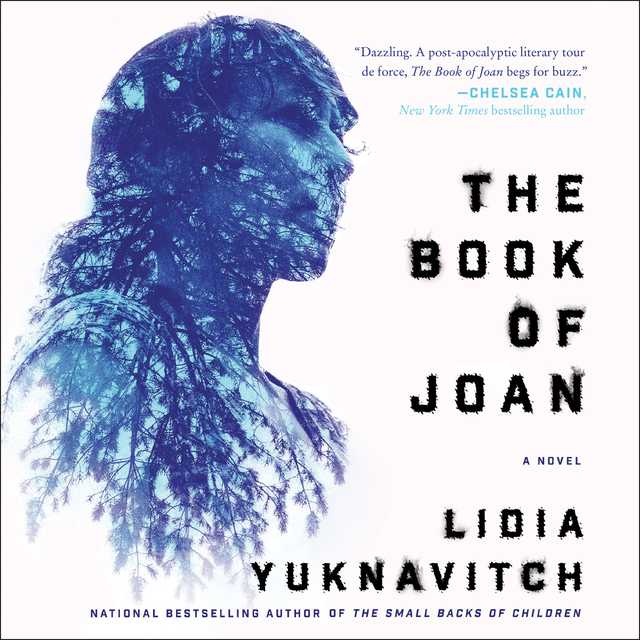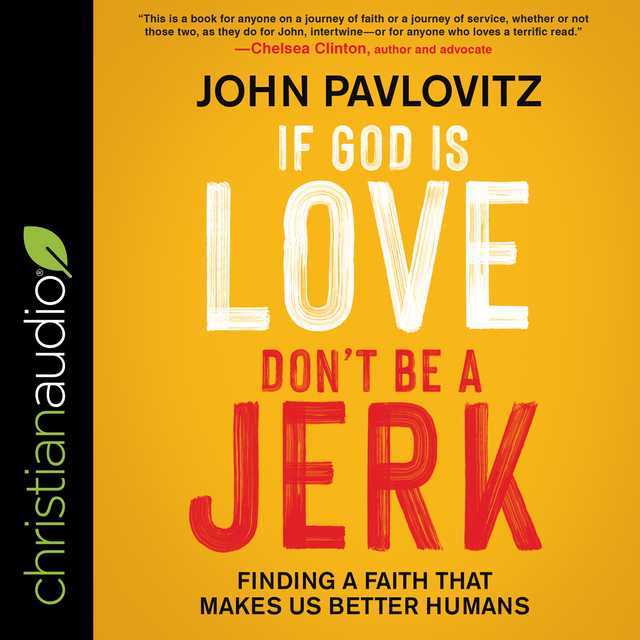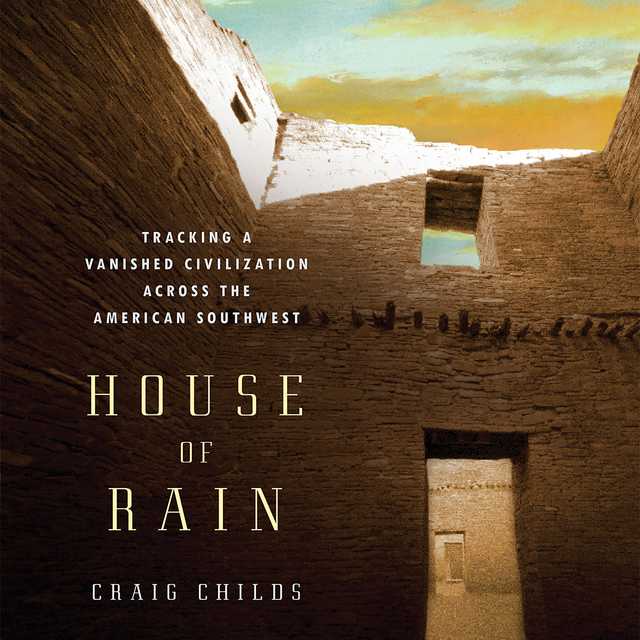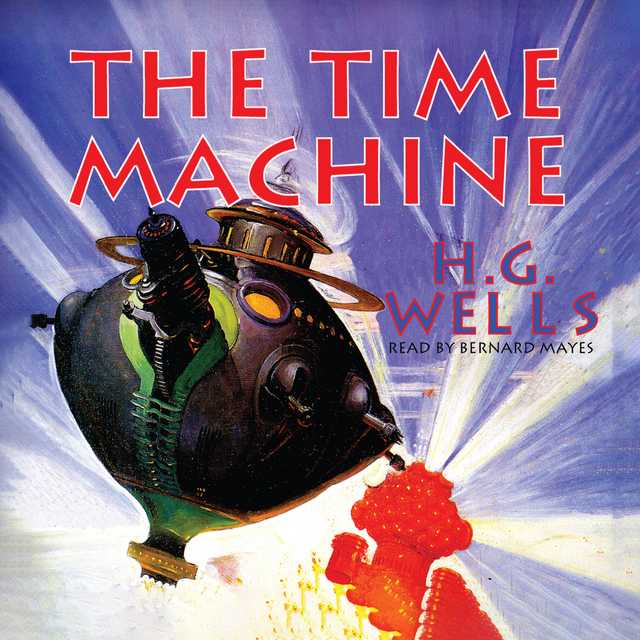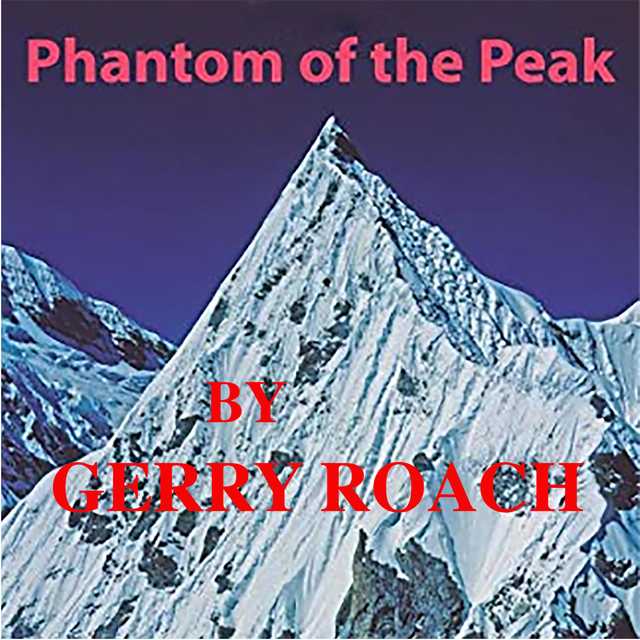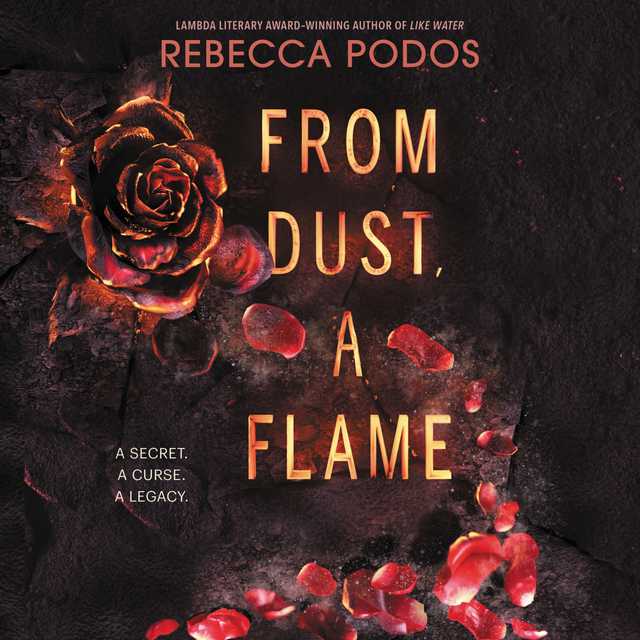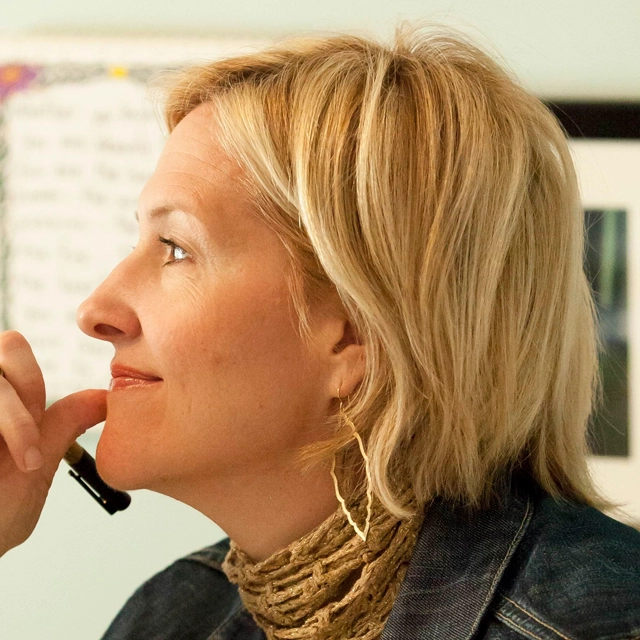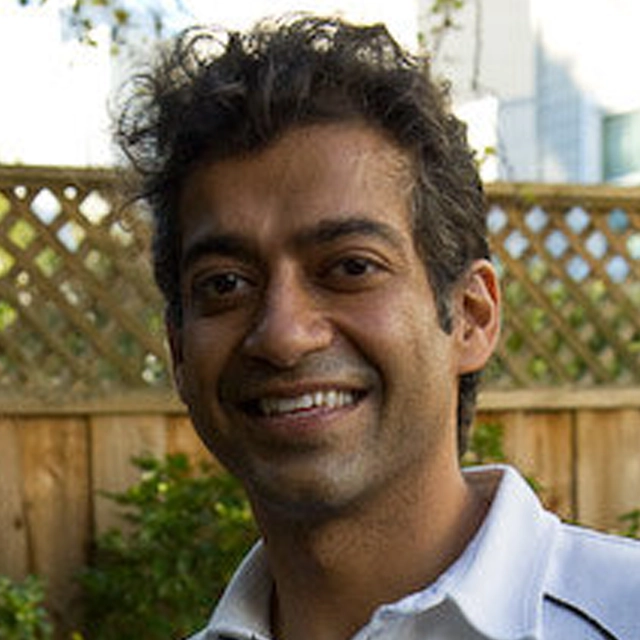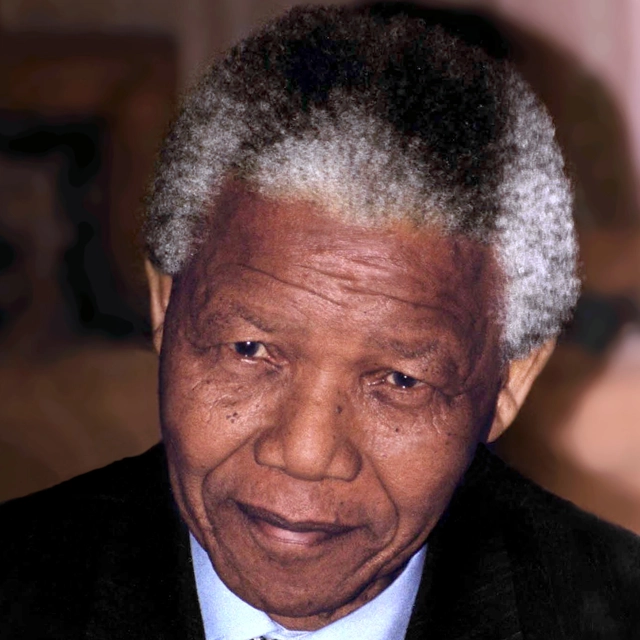The Book of Joan Audiobook Summary
A New York Times Notable Book * BuzzFeed 50 Books We Can’t Wait to Read this Year * New York Times Book Review Editor’s Choice * National Bestseller
“Brilliant and incendiary.” — Jeff VanderMeer, New York Times Book Review
“Stunning. . . . Yuknavitch understands that our collective narrative can either destroy or redeem us, and the outcome depends not just on who’s telling it, but also on who’s listening.” — O, The Oprah Magazine
“[A] searing fusion of literary fiction and reimagined history and science-fiction thriller and eco-fantasy.” — NPR Books
The bestselling author of The Small Backs of Children offers a vision of our near-extinction and a heroine–a reimagined Joan of Arc–poised to save a world ravaged by war, violence, and greed, and forever change history
In the near future, world wars have transformed the earth into a battleground. Fleeing the unending violence and the planet’s now-radioactive surface, humans have regrouped to a mysterious platform known as CIEL, hovering over their erstwhile home. The changed world has turned evolution on its head: the surviving humans have become sexless, hairless, pale-white creatures floating in isolation, inscribing stories upon their skin.
Out of the ranks of the endless wars rises Jean de Men, a charismatic and bloodthirsty cult leader who turns CIEL into a quasi-corporate police state. A group of rebels unite to dismantle his iron rule–galvanized by the heroic song of Joan, a child-warrior who possesses a mysterious force that lives within her and communes with the earth. When de Men and his armies turn Joan into a martyr, the consequences are astonishing. And no one–not the rebels, Jean de Men, or even Joan herself–can foresee the way her story and unique gift will forge the destiny of an entire world for generations.
A riveting tale of destruction and love found in the direst of places–even at the extreme end of post-human experience–Lidia Yuknavitch’s The Book of Joan raises questions about what it means to be human, the fluidity of sex and gender, and the role of art as a means for survival.
Other Top Audiobooks
The Book of Joan Audiobook Narrator
Xe Sands is the narrator of The Book of Joan audiobook that was written by Lidia Yuknavitch
Lidia Yuknavitch is the author of the National Bestselling novel The Small Backs of Children, winner of the 2016 Oregon Book Award’s Ken Kesey Award for Fiction as well as the Reader’s Choice Award, the novel Dora: A Headcase, and three books of short stories. Her widely acclaimed memoir The Chronology of Water was a finalist for a PEN Center USA award for creative nonfiction and winner of a PNBA Award and the Oregon Book Award Reader’s Choice. She founded the workshop series Corporeal Writing in Portland Oregon, where she also teaches Women’s Studies, Film Studies, Writing, and Literature. She received her doctorate in Literature from the University of Oregon. She lives in Oregon with her husband Andy Mingo and their renaissance man son, Miles. She is a very good swimmer.
About the Author(s) of The Book of Joan
Lidia Yuknavitch is the author of The Book of Joan
More From the Same
- Author : Lidia Yuknavitch
- Thrust
- The Small Backs of Children
- The Misfit’s Manifesto
- The Chronology of Water
- Verge
- Publisher : HarperAudio
- Abraham
- American Gods [TV Tie-In]
- Dead Ringer
- House of Sand and Fog
- Prey
The Book of Joan Full Details
| Narrator | Xe Sands |
| Length | 7 hours 10 minutes |
| Author | Lidia Yuknavitch |
| Category | |
| Publisher | HarperAudio |
| Release date | April 18, 2017 |
| ISBN | 9780062659941 |
Subjects
The publisher of the The Book of Joan is HarperAudio. includes the following subjects: The BISAC Subject Code is Alternative History, Fiction
Additional info
The publisher of the The Book of Joan is HarperAudio. The imprint is HarperAudio. It is supplied by HarperAudio. The ISBN-13 is 9780062659941.
Global Availability
This book is only available in the United States.
Goodreads Reviews
Ilenia
January 11, 2022
A seguito di una geocatastrofe, nel 2049 l’umanità si è trasferita in una stazione artificiale fluttuante, la CIEL, sotto il comando di un unico uomo: Jean de Men. La Terra, però, apparentemente disabitata, continua a orbitare al di sotto della piattaforma spaziale della CIEL da cui l’élite di ricchissimi che vi abita, per garantire la loro sopravvivenza, continua a drenare le poche risorse rimanenti del pianeta - ormai ridotto a una palla di fango - tramite le corde celesti, lunghissimi cordoni ombelicali tecnologici che fungono da condotti tra il mondo superiore e il mondo inferiore. La fantascienza ha sempre giocato con la metafora dell’ascensione – appannaggio delle classi sociali più alte – come unica via per la sopravvivenza: dal cult di Ballard, Il Condominio, fino alle declinazioni meno originali ma più recenti come El hoyo, il film di Galder Gaztelu-Urrutia, distribuito da Netflix.Lidia Yuknavitch però non si inserisce docilmente in questa tradizione, tanto che, leggendo le premesse de Il libro di Joan, potreste facilmente scambiare il romanzo per una derivazione banale di un tema noto (il futuro dell’umanità quando il nostro pianeta morirà). Influenzata dalla corrente new-weird, l’autrice non usa la crisi climatica come cornice e ambientazione ma come il grimaldello per intraprendere un radicale processo di decostruzione dell’uomo – inteso nella sua prospettiva androcentrica –, del patriarcato, della società intossicata e alienata del tardo-capitalismo. L’autrice capovolge il racconto lucido e siderale delle storie ambientate nello spazio per restituirci una narrazione cruda, violenta, esacerbata; un linguaggio scurrile, provocatorio, strabordante di immagini paradossali ed erotiche. Sceglie come protagoniste una donna matura (Christine) e una giovane adulta (Joan), le sceglie appositamente ai margini (vecchie e bambine tra le categorie più ignorate) perché proprio le classi meno favorite per rappresentare quel che resta dell’umanità saranno in grado di fare da portavoce ai valori visionari e incendiari della storia. Un romanzo ambizioso e rivoluzionario proprio perché si propone di rinnovare una nuova umanità, di rifondare una nuova società che tuttavia affonda le radici in profondità, in una terra antica, una terra che ha memoria. Segue analisi della trama con SPOILERIl mondo al di sopra Il libro di Joan è radicale fin dalle premesse. L’abbandono del pianeta Terra comporta una metamorfosi, un mutamento morfologico estremo che priverà gli uomini e le donne della loro sessualità, oltre che di gran parte dei loro sensi di percezione. Non emanano odori o altri tipi di secrezione, e di conseguenza nemmeno li percepiscono. Con l’ascensione nello spazio si sono de-umanizzati, lasciando sulla Terra la materia organica.“Sono priva di genere sessuale, o quasi. Ho la testa bianca, sembra di cera. Niente sopracciglia, né ciglia, né labbra, niente di tutto questo ma ossa sporgenti, zigomi, spalle, clavicole e punti accesso dati”. La narratrice è Christine, una donna di 49 anni che presto dovrà morire (su CIEL gli individui hanno una data di scadenza per via delle risorse e dello spazio limitato sulla stazione spaziale). È lei stessa a paragonare gli abitanti di CIEL a statue di bianco marmo. È soltanto il primo di molti riferimenti all’apollinea antichità classica. Di contro, alla Terra spetta il compito di rappresentare la controparte dionisiaca.Quest’umanità sterile, senza più sesso e amore, è nostalgica. È annoiata, lontano da casa e ha fame di desideri perduti. La sua impotenza si nutre di storie perché nelle storie quello che hanno perduto è di nuovo accessibile, almeno in forma testuale. Tuttavia – forse proprio per sopperire alla perdita e per restituire l’evidenza del corpo – i testi su CIEL si creano e si tramandano direttamente sulla pelle, non più su carta: tutti i corpi diventano leggibili e scrivibili. “Per via della nostra fame, quassù nel nostro falso paradiso, nacquero gli innesti cutanei”. Gli innesti sono letteralmente storie scritte sulla pelle, racconti in rilievo: “lontani discendenti dei tatuaggi, cugini spuri dell’alfabeto Braille”. Gli innesti più popolari sono quelli creati da Jean de Men, che proprio grazie al successo dei suoi racconti assurge al potere. CIEL è infatti una società minuscola, regolamentata da algoritmi e in cui tutti sono già ricchi quindi il potere si riduce a una questione di prestigio, una crudele pantomima, un perverso vizio di forma. Non stupisce che i racconti di Jean de Men siano insulsi, banali e misogini (il nome Jean de Men letteralmente si traduce come Jean degli uomini). Favolacce di violenza, infarcite da amori fasulli e convenzionali. Propaganda utile sia come narcotico sia come sollazzo e distrazione per i privilegiati superstiti di CIEL. “Jean de Men non fece altro che sostituire ogni divinità, ogni etica, ogni scienza, con il potere della rappresentazione: un’idea nata sulla Terra, sviluppata grazie ai media e alla tecnologia e perfezionata qui nello spazio”.Su CIEL quindi governa una celebrità, un vanesio uomo di spettacolo che guida un popolo ipnotizzato da intrattenimento posticcio e sorvegliato dal Panopticon, un sistema di vigilanza che organizza esecuzioni pubbliche per chi trasgredisce. Panem et circensem, quindi, rivisitata in uno stile tecnoburlesque in cui la giustizia è una tragica farsa. Ma in cosa consiste la trasgressione in un mondo senza vita come quello di CIEL? C’è una legge in politica: se vuoi governare, devi avere il controllo della narrazione. La verità è complicata, se riesci a raccontarla in modo convincente, dalla giusta prospettiva, ti crederanno. CIEL e Jean de Men hanno raccontato la storia – che è diventata quindi la Storia – su come la Terra sia diventata inabitabile. È tutta colpa di un’eco-terrorista, una ragazzina ribelle che ha deciso di disertare – nel mondo di prima, sulla terra morente, le guerre venivano combattute da bambini soldato – e di muovere contro il mondo degli uomini e i loro droni: è Joan, una pazza o una santa, che sente voci dal profondo della Terra e ha acquisito la capacità di controllare la materia. Joan, un pericolo per l’umanità, è stata però catturata e giustiziata, arsa vivo sul rogo come una strega. Eppure la sua leggenda vive ancora su CIEL…ed è questo culto che Jean de Men vuole sradicare. Tra chi non crede alla versione ufficiale e vede in Joan una martire ma soprattutto una speranza, c’è Christine, anche lei maestra nell’arte dell’innesto. Sa bene che nel mondo gelido di CIEL, solo l’immaginazione non è morta. Crede che “le storie salvano vite e danno forma all’azione” quindi vuole scrivere sui corpi di più persone possibili un “poema epico-corporale”che racconti e tramandi la storia di Joan, raccogliendo attorno a se seguaci di un movimento, disposto a tutto per ripristinare i valori di un’umanità perduta. “Le parole e il mio corpo, il luogo della resistenza”. La resistenza si organizza attorno ai corpi, è questa la filosofia del romanzo. E scavando più nel profondo, vedremo una contropposizione ancora più netta tra Jean de Men e Joan di Fango (l’assonanza non è un caso). Mentre Jean si arroga anche il diritto di sperimentare sui corpi degli abitanti di CIEL, tentando di raggiungere grazie alla tecnologia un tipo di procreazione per via asessuata (visto che hanno perso gli organi sessuali e non possono riprodursi), Joan per tutto il romanzo userà il suo potere tramite il suo corpo. Da un lato abbiamo un usurpatore di corpi altrui, dall’altro una donna che conserva – a differenza del resto dell’umanità – la capacità di generare la vita (sia perché donna sia perché in diretto contatto con le forza naturali della Terra). Da un lato abbiamo un uomo che si serve della tecnologia come appendice sterile, dall’altro una donna che si serve della solidarietà degli altri e delle energie della Terra, per quanto luride, fangose, disperate siano. In un mondo che ha espunto il corpo e i suoi bisogni, in un mondo senza madri, i seguaci di Joan riportano la carne e le viscere al centro della politica. Il mondo al di sotto “Senza rivolgermi a nessuna verità più alta di questa: noi siamo materia, come la terra e l’acqua e gli alberi e il cielo, come lo erano gli animali, come lo sono le stelle e i corpi umani. Rivendicando la nostra umanità come semplice umanità. Scriverò questo. Racconterò la verità”. Joan è un’altra ragazzina che si aggiunge alle schiere di ragazzine pericolose e rivoluzionarie delle narrazioni contemporanee (Anna di Ammaniti ma persino Greta Thumberg). Quanto fanno paura le ragazzine al potere? Quanto sono destabilizzanti? Quanto è facile trattarle da pazze, infantilizzarle, trattarle come elementi di disturbo. “Lui non aveva idea di cosa questa giovane adulta avesse fra le mani. La considerava ancora solo una femmina, una bambina che gioca a una specie di gioco in cui lui era sicuro di superarla in astuzia”. Eppure sono loro che sopravvivono al (e spesso sono causa del) crollo. Il rovesciamento nel romanzo di Y uknavitch è trasversale: non c’è solo un crollo di potere ma c’è anche un crollo della concezione di genere sessuale per come lo conosciamo e soprattutto. un crollo che porta il lettore dal sopra (CIEL) al sotto (il pianeta Terra). Possiamo interpretare il romanzo come una lunga discesa dalla sterilità e dalla gelida “nave del nulla” di CIEL al “grumo fangoso”, materico e pullulante di vita del pianeta Terra. Dall’alto al basso in termini di altitudine ma dal basso all’alto in termini di umanità. In teoria infatti l’elite della popolazione terrestre vive lassù la sua vita elevata, lontana da un ambiente moribondo. Ma non è così. CIEL è una nave senza vita. Invece è sulla Terra che si conserva la vita. “La Terra adesso non è altro che un suolo apocalittico e maculato; un opaco sole color seppia, di giorno; la notte, una Luna dalla luce così fioca da sembrare un livido sul cielo. Questa è una palla di fango senza vita. Almeno in superficie”. Se in superficie c’è desolazione e distruzione, nel sottosuolo c’è un mondo lussureggiante. Riflettendo sulla sopravvivenza futura, l’umanità ha scelto di guardare in alto, ha scelto lo Spazio. “Ma se invece tutto quello che conta fosse in basso? Lì dove le cose sono volgari e spregevoli? Dove i vermi e la merda e gli scarafaggi conducono la loro esistenza?”.Mentre Christine organizza la Resistenza su CIEL, sulla Terra seguiamo Joan – miracolosamente sopravvissuta grazie ai suoi poteri rigenerativi – e Leon, la sua fedele compagna, in un viaggio tra le macerie ma soprattutto tra le vite di quei pochi sopravvissutati ai disastri naturali che hanno sconvolto la Terra. Ma la vita va avanti anche in luoghi impossibili. In questi ultimi capitoli, l’autrice declina l’esperienza ultima dell’essere umano, l’esperienza irriducibile dell’Amore (“una parola che ha definizioni sempre esplosive”). L’Amore senza l’incontro con l’Altro è impossibile (“e nell’amare non sei sola”), senza lo scontro con i corpi altrui. Contro la solitudine e l’astrazione di CIEL, si può contrapporre soltanto la contaminazione tra carne, materia, vita e fango della Terra. Con una poetica incendiaria, Yuknavitch racconta come nei corpi riposa l’ultima risposta. Un finale problematico? Doveva concludersi in un solo modo “Il libro di Joan”, dato l’impianto filosofico e poetico alla base: con l’unione tra i due mondi, quello di sopra e quello di sotto, uno scontro che dà vita al conflitto finale tra Jean e Joan (anche tra mondo degli uomini e mondo delle donne? Le iniziali M e F dei cognomi lo suggeriscono). Se la sconfitta di Jean e l’ennesimo sacrificio di Christine, Trinculo e Joan appaiono giusti e anche inevitabili, a livello narrativo, il modo in cui arriviamo alla sequenza finale è un colabrodo, estremamente complicato nelle dinamiche che rimangono fino in fondo opache al lettore. Ancora più insensata – e soprattutto frettolosa - è la rivelazione sul sesso di Jean de Men. Non solo non è coerente con tutto quello che abbiamo saputo del personaggio fino a quel momento ma non aggiunge nulla a quanto già detto. Il fatto che sia una donna dovrebbe essere un’aggravante? Vorrebbe rappresentare il ruolo ancillare di certe donne nel sistema patriarcale? Ma a che serve dirlo tre pagine prima della fine? Non esplora il tema e non è una rivelazione utile all’impianto narrativo, alla filosofia di fondo del romanzo né provoca un qualche tipo di soddisfazione nel lettore (come invece fanno o dovrebbero fare i coup de théâtre). Semplicemente inutile, quando non direttamente dannoso perché getta l’ombra di una possibile interpretazione purista (transfobica?) su cosa rende le donne veredonne TM in opposizione alle nondonne(?). Conclusioni A controbilanciare la forza viscerale contenuta in questa storia, c’è purtroppo una debolezza strutturale nell’esposizione degli elementi fantascientifici. Nel corso della narrazione veniamo edotti in maniera progressiva su una mole decisamente considerevole di concetti e termini: si susseguono i protei, il kinema, le generine, il teletrasporto (attraverso energie telluriche?), luci blu innestate sulle tempie e altri espedienti che, per quanto suggestivi, mal si accordano e mal si spiegano in una storia già molto carica di metafore bibliche e mitologiche. Non è certo un libro perfetto, è meglio. Perché è di troppo, è disturbante e scomodo con una chiave interpretativa originale sulla distopia. Come Le Guin e Atwood, anche Lidia Yuknavitch traccia nuovi sentieri. Una pensatrice che usa il femminismo come detonatore, una forza erotica, perturbante che, stanca di lasciarsi infliggere cicatrici, preferisce lasciarne.
Julie
May 24, 2017
In August 2015 I participated in a weekend writing workshop with Lidia Yuknavitch, an experience I chronicled here A Weekend with Lidia. At a reading the evening after our first day together, Lidia told the crowd she was working on a novel about Joan of Arc. Lidia + historical fiction didn't compute for me, but I'm willing to follow her anywhere, so I trusted her version of Joan's legend would be something quite apart from cloaks and swords and dastardly priests. There were hints along the pre-release way that this wasn't another version of Joan set in the 15th century forests of Lancastrian France. Of course not. This is LIDIA. And this book is a core-shaking revolution of words. Tremblingly prescient, for it was written well before we knew what a dumpster fire of a political scene we were walking into, before demagoguery and willful ignorance would bring us to the edge of a precipice we are in desperate danger of plunging over. In The Book of Joan the world has already plunged. It is 2049 and Earth is all but destroyed—ravaged and gutted by a multiplicity of wars over scarce resources. Those who could afford to fled the scene and created CIEL, a colony orbiting the space above their former planetary home. Corruption abhors a vacuum and into that space steps Jean de Men, a former television cult of personality turned sadistic cult leader, whose greatest achievement was the capture and public assassination of Joan, an Earthbound girlwarrior-ecoterrorist. The Geocatastrophe that occurred in less than a generation's span forced shocking and irreversible physiological changes in the remaining human beings who live what remains of their existence on CIEL. This new species cannot procreate. But in their desperation to remain viable, they are destroying what little remains of life on earth, by sucking up its resources through Skylines and using children as fossil fuel. There is little I can share with you about the book's plot without dancing with spoilers. A work of speculative fiction, it begins on CIEL in the same bewildering, bleak tradition as Le Guin's The Left Hand of Darkness, with Christine as the doomed protagonist and her dearest Trinculo as resistor-martyr, but once the action falls to Earth and into Joan's story, it's grounding and full of love and warm muscle and heart and impossible to set aside. But the plot's not the point, anyway. It's what keeps the pages turning, and it's dazzling. Disorienting. Exasperating. Brilliant and wrenching.As Lidia told us in that workshop nearly two years ago, The story is not about what happens. The story is why it matters. And there is so much here that matters, it's hard to understand how it's contained in 266 pages, by humble paper and ink. Art as resistance. Women as warriors (THE FUTURE IS FEMALE so many of us around the world chanted on January 21, 2017). The crushing power of fertility. The rape of Earth for profit. The blank slate of body, the only thing that truly belongs to us, this vulnerable, dying canvas of muscle and bone and skin, telling the story of the world. Love as the reason to act. Love for earth, for lovers, for children. Love for hope, love for art. Lidia's prose is visceral and shocking and physical. She writes from the body as much as from the mind and the heart and you feel her words. As a reader I was stunned, horrified, aroused and broken. Whatever your expectations of this book, lay them aside. Just read and embrace the power of what fiction can do to tell the truth of the world.
David
February 21, 2018
I still don't know what to make of this dystopian sci-fi novel. It's a far-flung, imagined future that honors a storied past invoking Joan of Arc and medieval feminist Christine de Pizan (I had to look it up) I know nothing beyond the grade school basics when it comes to Joan of Arc but it didn't impede my enjoyment of the book at all.This thing is bloody, violent, sexually charged and angry without being overly academic. The story is challenging to say the least, but fiercely compelling. It's completely over the top and outrageous at times, bordering on affectation but I couldn't look away. At this point I'm really just throwing adjectives at the wall in lieu of any sort of penetrating review. It's one of those books that throws you into its orbit and spits you out at the end dazed and disoriented, but its ideas have burrowed under my skin leaving me scratching at it still.
MJ
January 26, 2021
Lidia Yuknavitch is best known for boiling her novel in noodles with Raymond Federman (footage now erased from the internet) during her years as a FC2 stablemate. Later, she wrote this post-apocalyptic retwisting of the Joan d’Arc story set in a floating space colony filled with agender freaks who tattoo narratives onto their bodies as the last remaining art form. Coming from a background in unconventional fiction, Yuknavitch brings stylistically explosive prose to the science-fiction / historical intertext / environmental catastrophe thriller narrative, creating a conceptually dense and sanguineous world of unbound invention that manages to be simultaneously captivating on the sentence level and engaging on a plotty plane.
Dagio_maya
June 30, 2019
Ecco il Pianeta Terra distrutto in ogni sua forma:”Vedo anche una morente palla di fango. Cosí è ridotta, nel 2049 circa, la nostra ex casa: la Terra. È una macchia indistinta color seppia.”Un esiguo gruppo di privilegiati si è rifugiato su una stazione orbitale fluttuante capeggiata da un despota. La sopravvivenza avviene attraverso il saccheggio di quello che rimane sul pianeta moribondo e a cui si accede attraverso le Corde celesti e, mentre lo sviluppo tecnologico va oltre ogni immaginazione, questo brandello di superstiti, in realtà, ha perso, nel giro di poche generazioni, i connotati fisici umani.Christine, prima voce narrante si descrive così:"Sono priva di genere sessuale, o quasi. Ho la testa bianca, sembra di cera. Niente sopracciglia né ciglia né labbra piú o meno carnose, niente di tutto questo ma ossa sporgenti, zigomi, spalle, clavicole, e punti accesso dati, cioè quei punti del nostro corpo in cui possiamo interagire con la tecnologia. C’è un leggero rialzo lí dove un tempo cominciava il mio seno, e una specie di monticello dove dovrei avere l’osso pubico, ma finisce qui. Di femminile non mi è rimasto altro." Lo scenario distopico ha il sapore dei racconti cyberpunk negli aspetti ipertecnologici, nella brutalità degli scenari. Ormai è chiaro che questo genere di narrativa ha accorciato le distanze temporali.“Il libro di Joan” ci racconta una storia del futuro prossimo (tra trentanni giusti!!) e, allo stesso tempo, mette sul piatto tematiche che sono parte di questo mondo contemporaneo.E’ un libro non facile per una certa dose di violenza (anche erotica in un certo qual modo) e di dettagli tecnici. Entrambe le caratteristiche possono far procedere a singhiozzo la lettura (se non addirittura bloccarla) a me è successo il contrario.Credo, infatti, che, per chi condivida il messaggio dell’autrice, sia più facile entrare nella disposizione corretta per apprezzarne il valore.Essenzialmente troviamo in questo romanzo la tematica di de-costruzione del concetto di potere (in ogni sua forma) e il riconoscimento del valore di ogni forma di controcultura. La narrazione è assieme al corpo come metafora ne è il fulcro.Y. rielabora personaggi storici e non:◾Christine Pizan che ricalca l’immagine dell’omonimo personaggio storico (scrittrice del ‘400 che fu “molto famosa inoltre per aver dato inizio alla cosiddetta Querelle des femmes[2]: dopo avere letto due opere rispettivamente di Boccaccio e di Jean de Meun, che difendevano l'idea che la donna è per natura un essere vizioso”- https://it.wikipedia.org/wiki/Christi...)◾Jean de Men- Jean de Meun o Jean de Meung, nato Jean Chopinel o Jean Clopinel (Meung-sur-Loire, 1240 circa – Parigi, 1305 circa) è stato un poeta francese del XIII secolo, noto soprattutto per la sua continuazione del Roman de la Rose.◾Joan del Fango- è chiaramente ispirata a Giovanna d’Arco◾Trinculo omonimo dell’ubriacone della Tempesta shakespeariana con la differenza che qui è un personaggio più devoto ad Eros che a BaccoOpera affascinante ma, insomma, non per tutti…”Cosa diede un impatto epico alla mia piccola sfida letteraria? La pelle, ecco cosa diede un peso epico alla rappresentazione letteraria. Il mezzo era il corpo umano. Non i rotoli sacri. Non ideologie militariste o discutibili teorie intellettuali. L’unica cosa che ci fosse rimasta, e cosí crollò il divario fra rappresentazione e vita. In principio era la parola, e la parola diventò il nostro corpo.
Vincent
April 25, 2017
I mean, how can you talk about Lidia Yuknavitch and not be reductive? She's irreducible. That's the whole thing. No one writes how she does, and so few write why she does. I think she's a living genius, and reading her work is whatever the opposite of impoverishing is. I was (and still remain) so enamored by her novel The Small Backs of Children that I went into The Book of Joan telling myself, "It's totally all right if it doesn't catapult you to the same soul/mind altitude that TSBOC did, because that was a pretty singular reading experience, Vincent, so don't hold it to that standard," but I should've known better: The Book of Joan is as fiercely intelligent and audacious and stunning as anything Lidia Yuknavitch has ever written. The way she handles language is almost narcotizing on the page, in the best possible way. She owns it and owns the ways in which she's owned by it. Her voice is unmistakable and I want to always be hearing it.And as with The Chronology of Water and The Small Backs of Children, The Book of Joan is profoundly moving. And I don't mean moving like affecting—though yes, of course, it's that, too; in spades it is that—but rather, moving in the sense that you are not in the same space when you leave the text as you were when you entered it. Lidia has picked you up and placed you somewhere kinder. It is a place that says: You are always reconstitutable, no matter the who and how and why of your brokenness.I'm an atheist, but I thank God for Lidia Yuknavitch's voice, words, and person in the world.
Beverly
June 16, 2017
This was a 4.5 read for me.My thoughts:Brilliant, unflinching, imaginative and scathing.These were the words that came to mind when I finished Yuknavitch’s literary tale of the reimagining of Joan of Arc set in the near future.This multilayered tale with a feminist bent and where the past is the present of the future appealed, intrigued and provoked me in that this book was always in my mind whenever I had to put it down for other life commitments.This book exposed me to the concept of “corporeality” – “where all our knowing comes from out bodies. And stories come out of you differently if you write from there.”I was taken on this concept influenced/evolved the themes of gender, climate change, humanity, and power as the storyline unfolded.I loved how storytelling is shown to be a form of resistance and a form of control, how having stories means having a self.Other story threads that struck a chord with me:- The thin line between creation and destruction- The underestimation of the evil of power or the power of power.- The well-played tragedy and cathartic hopeI definitely look forward to reading more books by the author in the future.
Andy
May 03, 2017
Corporeal: of or relating to a persons body, especially as opposed to their spirit. Each novel I read by Lidia Yuknavitch is some how, even better than the last. I had to pace myself while reading, as to savor it. The Book of Joan is dystopian unlike anything I've read before. Beautifully written and full of riveting action. I'll definitely be buying the hardcover when it comes out in April, and re-reading this masterpiece. Thanks to HarperCollins for the E- galley.
Jenny
November 05, 2016
Another brilliant novel from Lidia Yuknavitch. Yuknavitch is at the forefront of feminist writing. She can explore the complex relationship women have with their bodies like no other. Her dual protagonists have a strength and purpose that is inspiring and heartbreaking. Given our current political climate, this book is incredibly timely and eerily prescient. Yuknavitch's corporeal writing is a marvel.Thank you HarperCollins and Edelweiss for the ARC.
Allison
February 04, 2017
Reminded me a bit of Kameron Hurley's short story "The Corpse Archives". Very good ~literary~ sci-fi. Good timing with the Handmaid's Tale miniseries releasing in March and probably an upswing in readership for this kind of thing. All that said, I did like it!
Jalen
May 24, 2017
Absolutely revolting. Highly recommend.
Ignacio
June 17, 2018
Libro lleno de desesperanza con un ecosistema terrestre asolado y los reductos de la especie humana condenados a vivir en una estación espacial aguardando nadie sabe qué. El sexo ha desaparecido, no nacen nuevos niños, la estructura social es de una crueldad extrema... Nuestros congéneres casi pintan peor que el planeta, bajo el yugo de un caudillo, Jean de Men, que busca recuperar la natalidad como un Doctor Mengele embutido en un mandil de carnicero. Apenas existe una pequeña resistencia de inadaptados, en su mayoría mujeres, que se rebelan contra destino que de Men les tiene reservado. Aunque la cubierta trasera del libro alude a Naomi Alderman y Kameron Hurley, estéticamente tiene más relación con James Tiptre, Jr. y Samuel R. Delany. Sobre todo por la expresividad de la escritura de Yuknavitch, una prosa con abundantes figuras retóricas que, en su imaginación exuberante y bien enfocada, compensan la crudeza y la ausencia de esperanza con imágenes particularmente hermosas. He disfrutado mucho con ellas aunque entiendo que quien obtenga el placer de la ciencia ficción en el novum y/o el optimismo, se le pueda hacer muy cuesta arriba el peso de la toxicidad de la humanidad, por mucho que se defiendan unos valores y el acto de crear.
Frequently asked questions
Listening to audiobooks not only easy, it is also very convenient. You can listen to audiobooks on almost every device. From your laptop to your smart phone or even a smart speaker like Apple HomePod or even Alexa. Here’s how you can get started listening to audiobooks.
- 1. Download your favorite audiobook app such as Speechify.
- 2. Sign up for an account.
- 3. Browse the library for the best audiobooks and select the first one for free
- 4. Download the audiobook file to your device
- 5. Open the Speechify audiobook app and select the audiobook you want to listen to.
- 6. Adjust the playback speed and other settings to your preference.
- 7. Press play and enjoy!
While you can listen to the bestsellers on almost any device, and preferences may vary, generally smart phones are offer the most convenience factor. You could be working out, grocery shopping, or even watching your dog in the dog park on a Saturday morning.
However, most audiobook apps work across multiple devices so you can pick up that riveting new Stephen King book you started at the dog park, back on your laptop when you get back home.
Speechify is one of the best apps for audiobooks. The pricing structure is the most competitive in the market and the app is easy to use. It features the best sellers and award winning authors. Listen to your favorite books or discover new ones and listen to real voice actors read to you. Getting started is easy, the first book is free.
Research showcasing the brain health benefits of reading on a regular basis is wide-ranging and undeniable. However, research comparing the benefits of reading vs listening is much more sparse. According to professor of psychology and author Dr. Kristen Willeumier, though, there is good reason to believe that the reading experience provided by audiobooks offers many of the same brain benefits as reading a physical book.
Audiobooks are recordings of books that are read aloud by a professional voice actor. The recordings are typically available for purchase and download in digital formats such as MP3, WMA, or AAC. They can also be streamed from online services like Speechify, Audible, AppleBooks, or Spotify.
You simply download the app onto your smart phone, create your account, and in Speechify, you can choose your first book, from our vast library of best-sellers and classics, to read for free.
Audiobooks, like real books can add up over time. Here’s where you can listen to audiobooks for free. Speechify let’s you read your first best seller for free. Apart from that, we have a vast selection of free audiobooks that you can enjoy. Get the same rich experience no matter if the book was free or not.
It depends. Yes, there are free audiobooks and paid audiobooks. Speechify offers a blend of both!
It varies. The easiest way depends on a few things. The app and service you use, which device, and platform. Speechify is the easiest way to listen to audiobooks. Downloading the app is quick. It is not a large app and does not eat up space on your iPhone or Android device.
Listening to audiobooks on your smart phone, with Speechify, is the easiest way to listen to audiobooks.

